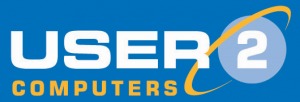Researchers at ETH Zurich have developed a zero-energy condenser that can harvest drinking water from the humidity in the atmosphere 24/7.
Could Solve Shortage Challenges
In some parts of the world, fresh drinking water is scare. Two of the main options, therefore, are:
– Communities near the ocean can desalinate sea water but this requires a large amount of energy.
– Communities further from the coast can try to condense atmospheric humidity through cooling, either through processes that require high energy input or by using “passive” technologies that use the temperature swing between day and night. However, with passive technologies e.g., dew- collecting foils, water can be extracted only at night because the daytime sun’s heats on the foil makes condensation impossible.
The New ETH Zurich Condenser
The technology behind the new ETH Zurich Condenser means that it can harvest water 24 hours around the clock, with no energy input, even under the blazing sun.
Self-Cooling
The condenser consists of a specially coated glass pane, which reflects solar radiation, and also radiates away its own heat through the atmosphere. This means that it can cool itself down to as much as 15 degrees Celsius below the ambient temperature.
On the underside of the pane, water vapour from the air condenses into water in a similar way to how poorly insulated windows get condensation in winter.
Protection From Radiation Too
The glass pane on the condenser is also coated with specifically designed polymer and silver layers so that pane emits infrared radiation at a specific wavelength window to the outer space, with no absorption by the atmosphere nor reflection back onto the pane. Also, the device features a cone- shaped radiation shield designed to deflect heat radiation from the atmosphere, shield the pane from incoming solar radiation, and allow the device to radiate heat outward. This enables the condenser to self- cool, fully passively.
Why No Energy Needed?
Unlike other technologies which require energy to be used in wiping the condensed water from the surface of the condenser to collect it, ETH Zurich’s condenser has a superhydrophobic (extremely water- repellent) coating on the underside of the pane. This means that the condensed water beads up and runs off on its own accord, thereby requiring no energy input.
Variations
The ETH Zurich researchers have noted how there is even more scope to develop the condenser technology. For example, it could be combined with other methods, such as water desalination, to increase yield.
What Does This Mean For Your Organisation?
The fact that the coated panes and condenser are relatively simple to build, and that the unit requires no energy and appears to work well could make it a valuable tool for countries with water scarcity and, in particular, for developing and emerging countries. The fact that it makes drinking water from the air (humidity) also means that, unlike desalination technology, it is not limited to just being used in coastal areas. It’s also worth noting that, just as solar cells feature several modules set up next to each other, several water condensers could also be placed side by side to piece together a large-scale system where required thereby making it an even more practical system.




